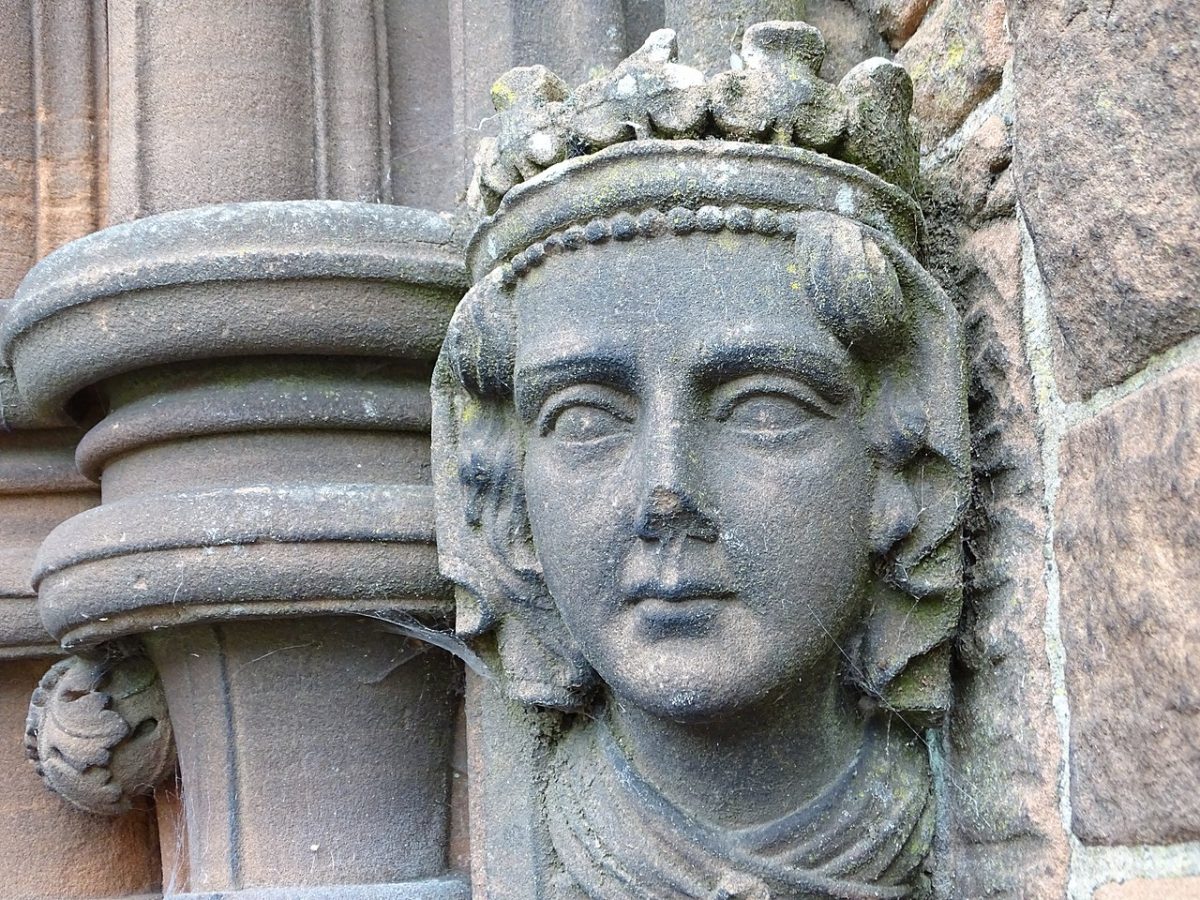Scotland Programme Coordinator Sara Thomas is working with tara s Beall, of the Dumfries Historic Buildings Trust, to support their new Stonecarving project. The project is funded by the Heritage Lottery Fund, Holywood Trust and the People’s Project, and runs from August 2018 to July 2019.
I’ve known tara Beall for a while – our paths first crossed when I was the Wikimedian in Residence at Museums Galleries Scotland, working with Glasgow Museums, and we were organising an editathon to do with the Showpeople of Scotland, with whom tara had worked for some years. (Their lifestyle and culture is once again under threat, due to regeneration plans in Govan, which would affect one of their permanent yards). Months later she came to an editathon which was focussed on improving the article on (Scottish political activist, rent strike organiser and one of Glasgow’s first woman councillors) Mary Barbour, and then we ran an editathon at the Glasgow Women’s Library with tara’s Strong Women of the Clydeside (SWaC) project team, and then another (also for SWaC) at the Mitchell Library when I was Wikimedian at the Scottish Library and Information Council.

It was at that point that we started to talk about her new project, based in Dumfries, which would focus on the stonecarving heritage of the area. Wouldn’t it be great to include a Wiki element to this, she asked? Well yes, I thought.
“Creative heritage projects almost always have websites, but the information they generate is not sustainable – who is looking after the sites five years on? Often, the information generated by publicly funded projects is lost (from the digital realm) after a few years … Wikipedia is a key knowledge platform, and an excellent way for us to deliver an international audience to our local heritage project (and vice versa).” (tara s Beall)
A few months later, we were in Dumfries, and tara is pointing me towards a pub – well, actually, she’s pointing me to the incredible carving on the building that houses the pub. I snap a picture to use later in the workshop as an example. Looking around, I can see that it’s not the only example of this kind of work in the town. In fact, it’s not even the only example on this street.

When it comes to community heritage, it’s all too common to see excellent digital outputs disappear shortly after the project finishes – websites that expire, apps that aren’t maintained, content held on a third-party commercial service that’s bought over and subsequently vanishes… and so it’s been good to work with organisations that see the potential in using open licensing, and engagement with the Wikimedia projects, to ensure more sustainability in the dissemination of their digital outputs. I was grateful to be able to input into Historic Environment Scotland’s Archaeology Programme’s “Sharing Our Stories” document, which offers advice to those groups looking to make the most impact in sharing the results of their project.
The Dumfries Stonecarving Project aims to promote the rich stonecarving heritage of the area, and includes practical taster sessions, summer schools with local young people, an exhibition, and workshops and ‘stonecarving quests’ with photography groups to record some of that heritage. Using Wikimedia Commons and Wikipedia, the project seeks to give this heritage a global audience, disseminating it through channels which have longevity, and which can, through tools like Magnus Manske’s GLAMorgan, give them insight into where their content is being used.
“We are also delighted to be offering workshops to local photography clubs (like the Dumfries North West Photography Club) where they can learn about Creative Commons licences, and best practice for uploading their images to Wikimedia. And because the images are shared under an open licence, everyone can enjoy the beauty of our sandstone heritage. Dumfries has an amazing history of stonecarving, and a wealth of local buildings with incredible carvings on them — from ‘green men’ to gargoyles. Working with Wiki will allow us to get a large number of local people engaged with these histories and interacting with Wikipedia – getting local people involved in preserving their heritage.” (tara s Beall)

And so it’s later on that evening, in a community centre very close to Lincluden Abbey – voted one of Scotland’s favourite “Hidden Gems” during Dig It!’s 2017 Scotland in Six campaign – that I find myself chatting away to a keen group of photographers, who had the week previous walked around their town, taking some incredible pictures of listed buildings. I tell them a little about Wikimedia Commons, and the other Wikimedia projects, show them how to upload, how to use the Wiki Loves Monuments interactive map, and away they go. That evening we uploaded 80 pictures to Commons, and by a few days later, that number stood at over 170. You can see their pictures here, in a category that includes pictures of Dumfries, but also of other buildings and monuments in Scotland that the group had photographed. There are some great pictures in there, some of which have now been added to pages on English Wikipedia, including that for Dumfries itself. Over 15,000 people have read that article since.
That session was the first of a few that we’ll be running over the next few months, and I’m really excited to see what comes next!







